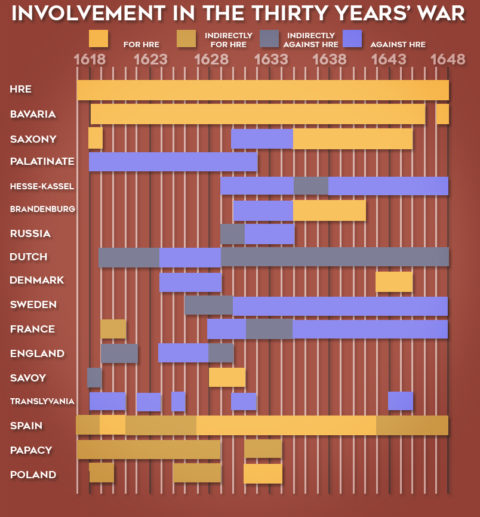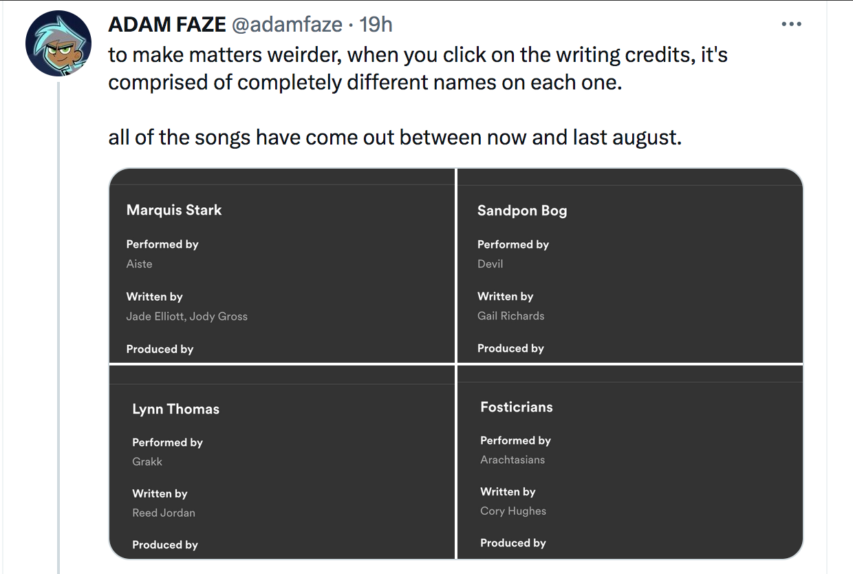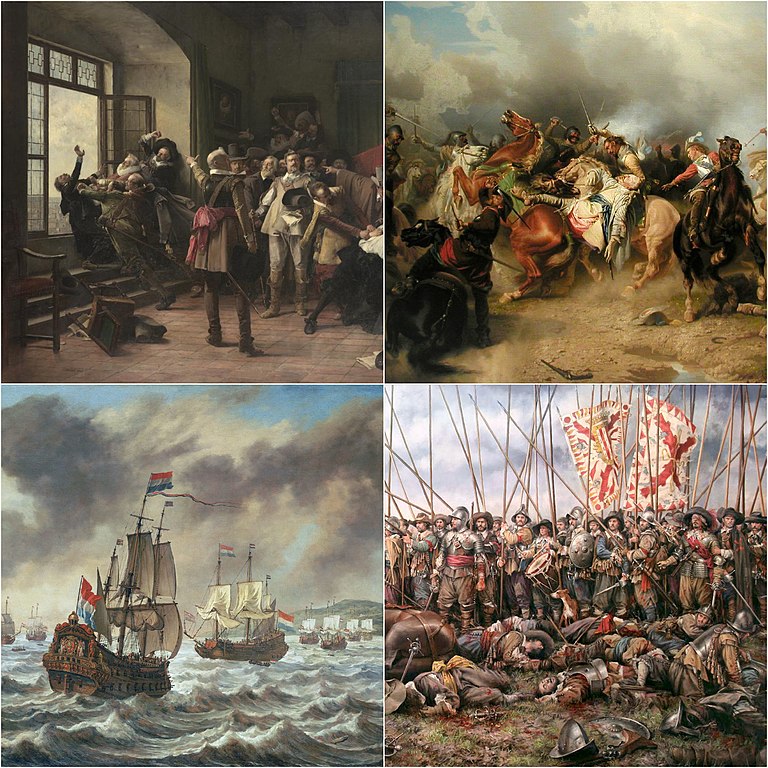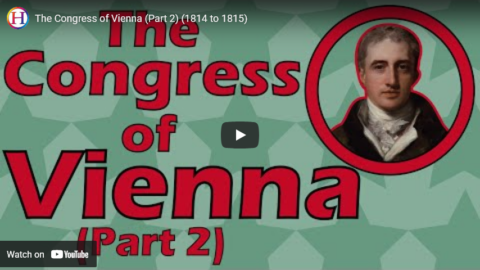Tom Scott
Published 28 Nov 2016In Gävle, Sweden, every year they build Gävlebocken, an enormous traditional Swedish Christmas straw goat. And every year, someone tries to burn it down. Here’s to holiday traditions.
(more…)
December 26, 2023
Arson as a Christmas Tradition: The Gävle Goat
December 7, 2023
Carl Gustaf: Recoilless Rifle | Anti-Tank Chats
The Tank Museum
Published 25 Aug 2023From The Falklands to Ukraine; the Carl Gustaf recoilless rifle was introduced in 1948 and is still used by armies around the world today.
(more…)
August 14, 2023
The Mighty Carl Gustaf MAAWS: A King Among Weapons
Interesting Engineering
Published 3 May 2023The Carl Gustaf recoilless rifle, produced by Saab Bofors Dynamics, is an adaptable and portable weapon system designed for anti-tank and anti-structure operations. Its original design was widely adopted by European armies as a primary anti-tank weapon before being replaced by the superior Carl Gustaf M2 in 1964.
In the early 1990s, the U.S. Army took an interest in the M3 model due to its lightweight design, versatility, and powerful anti-tank and anti-structure capabilities. It was initially adopted by the Army’s Special Operations Command (USASOC) and gained popularity among soldiers for its ease of use, accuracy, and effectiveness against a range of targets.
Compared to other weapons like the AT-4 and the FGM-148 Javelin, the M3 offers the advantage of reloadability thanks to its rifled metal/carbon fiber launch tube. At 22 lbs (10 kg), it is more manageable than the Javelin’s 50 lbs (22.7 kg), allowing for faster engagement compared to waiting for mortar support. It is also more cost-effective than the Javelin and artillery shells when targeting enemies in hard cover.
Overall, the Carl Gustaf recoilless rifle is a powerful and effective weapon system that has been widely adopted by militaries around the world. Its continued development and advancement in technology ensure that it will remain an important tool in modern warfare for years to come.
(more…)
July 8, 2023
During the pandemic, governments across the world chose the worst way to respond
In City Journal, John Tierney explains why western governments’ almost universal grabbing of extraordinary powers was the worst possible way to handle the public health crisis of the Wuhan Coronavirus:
Long before Covid struck, economists detected a deadly pattern in the impact of natural disasters: if the executive branch of government used the emergency to claim sweeping new powers over the citizenry, more people died than would have if government powers had remained constrained. It’s now clear that the Covid pandemic is the deadliest confirmation yet of that pattern.
Governments around the world seized unprecedented powers during the pandemic. The result was an unprecedented disaster, as recently demonstrated by two exhaustive analyses of the lockdowns’ impact in the United States and Europe. Both reports conclude that the lockdowns made little or no difference in the Covid death toll. But the lockdowns did lead to deaths from other causes during the pandemic, particularly among young and middle-aged people, and those fatalities will continue to mount in the future.
“Most likely lockdowns represent the biggest policy mistake in modern times,” says Lars Jonung of Lund University in Sweden, a coauthor of one of the new reports. He and two fellow economists, Steve Hanke from Johns Hopkins University and Jonas Herby of the Center for Political Studies in Copenhagen, sifted through nearly 20,000 studies for their book, Did Lockdowns Work?, published in June by the Institute for Economic Affairs (IEA) in London. After combining results from the most rigorous studies analyzing fatality rates and the stringency of lockdowns in various states and nations, they estimate that the average lockdown in the United States and Europe during the spring of 2020 reduced Covid mortality by just 3.2 percent. That translates to some 4,000 avoided deaths in the United States — a negligible result compared with the toll from the ordinary flu, which annually kills nearly 40,000 Americans.
Even that small effect may be an overestimate, to judge from the other report, published in February by the Paragon Health Institute. The authors, all former economic advisers to the White House, are Joel Zinberg and Brian Blaise of the institute, Eric Sun of Stanford, and Casey Mulligan of the University of Chicago. They analyzed the rates of Covid mortality and of overall excess mortality (the number of deaths above normal from all causes) in the 50 states and the District of Columbia. They adjusted for the relative vulnerability of each state’s population by factoring in the age distribution (older people were more vulnerable) and the prevalence of obesity and diabetes (which increased the risk from Covid). Then they compared the mortality rates over the first two years of the pandemic with the stringency of each state’s policies (as measured on a widely used Oxford University index that tracked business and school closures, stay-at-home requirements, mandates for masks and vaccines, and other restrictions).
The researchers found no statistically significant effect from the restrictions. The mortality rates in states with stringent policies were not significantly different from those in less restrictive states. Two of the largest states, California and Florida, fared the same — their mortality rates both stood at the national average — despite California’s lengthy lockdowns and Florida’s early reopening. New York, with a mortality rate worse than average despite ranking first in the nation in the stringency of its policies, fared the same as the least restrictive state, South Dakota.
June 25, 2023
Workers will be forced to stop working to salve the consciences of university-educated elite wankers
Brendan O’Neill on the Climate Goblin’s latest stunt in Sweden:
Picture the daughter of an opera singer preventing working-class men from doing their jobs. A young woman so well-connected that she probably has presidents on speed-dial physically blocking truck drivers from doing what they do. A child of privilege gathering with her similarly comfortable pals to stop working people from working.
Well, shorn of all the fact-lite bluster about “saving the planet”, that’s exactly what Greta Thunberg’s latest eco-stunt adds up to. The pint-sized prophetess of doom is back in the headlines. This time for getting arrested in Malmo harbour in Sweden, where she and other members of the End is Nigh cult have been holding a sit-down protest to stop oil tankers from leaving and delivering their life-giving cargo to the good people of Sweden and beyond.
The photographs from this temper tantrum disguised as a political protest tell a fascinating tale of the classism and narcissism in green politics. In the middle of the road are the smug-looking youths. One has green hair. Others sport beanie hats. None has ever driven a truck, clearly. Their banners speak of defending Earth from man’s evil burning of the toxic sludge of oil. And in the background are the supposed agents of this evil – the truckers; working men idly standing by their tankers while the world’s media get shots of Greta looking sad for Gaia.
What an apt snapshot of the hierarchy of virtue in what passes for radical politics today. Working-class people reduced to background actors, non-player characters, in a drama feverishly focussed on the jumped-up angst of the privileged. Working men as mere backdrop to the eco-neuroses of the comfortably off. In the moral universe fashioned by eco-influencers and their legion fawners in the political and media elites, the irrational fears of the upper-middle class carry more weight than the living standards of the working class.
It’s a story we see repeated across every act of eco-agitation today. In the UK, the plummy activists of Just Stop Oil, all called Poppy or Edred, block roads and prevent builders, scaffolders, deliverymen, mums and others from carrying out their essential work. The fightback of working men against this imperious imposition on their right to earn a living – witness scaffolders pushing eco-irritants out of the road – has been heartening to see. As a worker at Smithfield meat market in London put it a few years back when Extinction Rebellion types stormed in to speak up for animal rights or something, why should I allow this “happy-clappy mob” to stop me from being “able to pay my bills”?
May 7, 2023
Tank Chats Reloaded | S-Tank | The Tank Museum
The Tank Museum
Published 27 Jan 2023In this episode of Tank Chats Reloaded, we are delighted to be joined by Stefan Karlsson, the director and curator of The Swedish Tank Museum. He shares his remarkable journey with the S-Tank, from his first experience driving it at the age of nine, to his later service in the Swedish Army. Stefan’s passion for the S-Tank is evident, and his story is sure to captivate and inspire.
(more…)
April 20, 2023
It’s not your imagination, you really did just hear that song again … and again … and again
Ted Gioia on some sort of scam-like activity going down on Spotify and other large web platforms:
Adam Faze kept hearing the same song on Spotify over and over again.
Such things aren’t unusual. Hit songs get played repeatedly—although this one seemed more annoying than most.
But in this case, something even more bizarre was happening.
When Adam looked to see the name of the song, it was always different. The titles were a wild assortment—almost as if a random word generator had been used to pick them:
- “Trumpet Bublefig”
- “The Proud Dewdrop Amulet”
- “Thorncutter”
- “Viper Beelzebub”
- “Whomping Clover”
- Etc. etc.
But the music was always the same.
Even stranger, the artist was also different in each instance. And if you clicked on the writer credits, those were all different too.
How could the same track be attributed to dozens of different musicians? How could the same song be written by dozens of different composers?
Adam started compiling a playlist, and adding each new iteration of this song when he found it. When he got to 49 versions, he shared the playlist on social media. “I’ve officially stumbled upon the weirdest thing I’ve ever seen”, he announced.
A Twitter user, alerted by this, quickly discovered another 10 iterations of the same song. This banal tune was everywhere. The use of multiple aliases made it difficult to gauge the full extent of the deception, but Spotify was pushing this track so aggressively that it was impossible to hide the charade they were playing.
When asked how it was possible to find so many examples, Adam replied: I’m completely serious when I say it was starting to be every other song after a while.”
The song itself is just 53 seconds. And you’re glad when it’s over, because this tune is a loser — almost a Frank-Ocean-at-Coachella level of bad. Even call centers have better taste in their on-hold music.
February 11, 2023
Napoleon’s Downfall: Why He Lost the Battle of Nations
Real Time History
Published 10 Feb 2023After the brief summer 1813 cease fire, Napoleon’s campaign in Germany resumes. Surrounded by the Allies — which also manage to slowly turn the tide at Großbeeren, Dennewitz, Kulm, and Dresden — his only remaining option is the ultimate battle which takes place in October 1813 at Leipzig: The Battle of Nations.
(more…)
February 8, 2023
The ghastly Thirty Years’ War in Europe
In The Critic, Peter Caddick-Adams outlines the state of Europe four hundred years ago:

A war as long and as complex requires something like this to help keep the narrative somewhat understandable.
Exactly four hundred years ago, a dark shadow was slithering across mainland Europe. It stretched its bleak, cold presence into each hearth and home. Everything it touched turned to ruin. Musket and rapier, smoke and fire, ruled supreme. Nothing was immune. Animals and children starved to death, mothers and adolescent girls were abused and tortured. The lucky ones died, alongside their brothers and fathers, slain in battle. Possessions were looted, crops destroyed, barns and houses burned. There seemed no end to the evil and pestilence. Sixteen generations ago, many believed the end of the world had arrived.
This was not a tale of Middle Earth. The place was central Europe in the early 17th century. In 1618 the future Holy Roman emperor Ferdinand II, a zealous follower of the Jesuits, had attempted to restore the Catholic Church as the only religion in the Empire and exterminate any form of religious dissent. Protestant nobles in Bohemia and Austria rose up in rebellion. The conflict soon widened, fuelled by the political ambitions of adjacent powers. In Europe’s heartland, three denominations fought it out: Roman Catholicism, Lutheranism and Calvinism.
The result was an interwoven tangle of diplomatic plot twists, temporary alliances and coalitions, as princes, bishops and potentates beseeched outside powers to help. The struggle, which lasted for thirty years, boiled down to the Roman Catholic and Habsburg-led Holy Roman Empire, fighting an incongruous array of Protestant towns and statelets, aided by the anti-Catholic powers of Sweden under Gustavus Adolphus, and the United Netherlands. France and Spain also took advantage of the distractions of war to indulge in their own sub-campaigns. Britain took no formal part but was about to become embroiled in her own civil war.
The principal battleground for this collective contest of arms centred on the towns and principalities of what would become Germany, northern Italy, the Netherlands and the Czech Republic. The war devastated many regions on a scale unseen again until 1944–45. For example, at Magdeburg on the River Elbe, 20,000 of 25,000 inhabitants died, with 1,700 of its 1,900 buildings ruined. In Czech Bohemia, 40 per cent of the population perished, with 100 towns and more than a thousand villages laid waste. At Nordlingen in 1634, around 16,000 soldiers were killed in a single day’s battle. The town took three centuries for its population to return to pre-war levels. Refugees from smaller settlements swelled the many walled cities, increasing hunger and spreading disease.
Too diminutive to defend themselves, all states hired mercenaries, of whom a huge number flourished in the era, enticed by the prospect of quick wealth in exchange for proficiency with sword and musket. Employed by every antagonist, but beholden to no one, these armed brigands — regiments would be too grand a term for the uniformed thugs they were — roamed at will. With their pikes and their muskets, they plundered the countryside in search of booty, food and transport. In their wake, they left burning towns, ruined villages, pillaged farms. Lead was stripped from houses and church roofs for ammunition.
Left to right:
The Defenestration of Prague (23 May, 1618), The death of Gustavus Adolphus at Lützen (16 November, 1632), Dutch warships prior to the Battle of the Downs (21 October, 1639), and The Battle of Rocroi (19 May, 1643).
Collage by David Dijkgraaf via Wikimedia Commons.When in the winter of 1634 Swedish mercenaries were refused food and wine by the inhabitants of Linden, a tiny Bavarian settlement, they raped and looted their way through the village, leaving it uninhabitable. Across Europe, travellers noted the human and animal carcasses that decorated the meadows, streams polluted by the dead and rotting crops, presided over only by ravens and wolves. No respect was shown for the lifeless. Survivors stripped corpses of clothing and valuables; if lucky, the deceased were tossed into unmarked mass graves, since lost to history.
Having triggered the war, Ferdinand predeceased its end. We can never know how many died in Europe’s last major conflagration triggered by religion. Archives perished in the flames, and survivors were not interested in computations. Historians now put the death toll at between 8 and 12 million. Probably 500,000 perished in battle, with the rest, mostly civilians, expiring through starvation and disease. We think these casualties may equate to as much as 20 per cent of mainland Europe’s population and perhaps one-third of those in modern Germany, bringing the Thirty Years’ War a potency similar to the Black Death or either world war. The region did not recover for at least three generations.
Economic activity, land use and ownership altered terminally. When the exhausted powers finally met in October 1648 at Osnabrück and Münster in the German province of Westphalia to end the directionless slaughter, of whom self-serving militias were the only beneficiaries, Europe’s balance of power had shifted tectonically. Fresh rules of conflict and the legitimacy of a new network of 300 sovereign states, independent from a Holy Roman Emperor or a Pope, marked the struggle as a watershed moment, leading to the Enlightenment and an era that disappeared only with Napoleon.
October 6, 2022
Carl Gustav m/42: A 20mm Recoilless Antitank Rifle
Forgotten Weapons
Published 21 Apr 2017The Swedish Pansarvärnsgevär fm/42 made by the Carl Gustav company was an interesting early hybrid antitank weapon — a recoilless rifle firing solid armor-piercing projectiles. It used a 20x180mm case, propelling the 108g (1650gr) bullet at 950 m/s (3150 fps). This was capable of perforating 40mm of perpendicular armor plate at 100m (a high explosive projectile was also made). This was on the high end of armor penetration for anti-tank rifles, and the m/42 was able to do this with a weapon weighing just 11.7kg (25 lb) — less than a quarter of a comparable 20mm conventional rifle.
This was possible because of its recoilless design — upon firing, the rear end of the cartridge case would blow out and vent out the back of the weapon, instead of being firmly sealed like a conventional rifle. This created a counter balancing recoil impulse which prevented the gun and shooter from having to absorb the full recoil energy produced by a heavy bullet launching off at high velocity. The tradeoff was that much of the potential energy of firing was wasted venting out the back instead of pushing the bullet forward, which is why the cartridge case was so oversized.
About a thousand of the guns were made by the end of World War 2, at which time even it had been made quite thoroughly obsolete by the rapidly increasing thickness of tank armor. It would, however, be the stepping-stone to the m/48 Carl Gustav 84mm recoilless rifle, which used a shaped charge warhead to perforate armor with a stream of molten metal instead of relying on velocity of a hardened projectile.
(more…)
October 4, 2022
Sweden: The Jews’ Salvation? – WAH 080 – October 2, 1943
World War Two
Published 2 Oct 2022As the Allies advance in southern Italy, the people of Naples join them in fighting the Wehrmacht. In Denmark, the biggest rescue operation of Jews thus far begins.
(more…)
September 15, 2022
Lahti L-35: Finland’s First Domestic Service Automatic Pistol
Forgotten Weapons
Published 23 Apr 2018When Finland decided to replace the Luger as its service handgun, they turned to Finland’s most famous arms designer, Aimo Lahti. After a few iterations, Lahti devised a short recoil semiautomatic pistol with a vertically traveling locking block, not too different from a Bergmann 1910 or Type 94 Nambu. It was adopted in 1935, but production did not really begin in earnest until 1939 at the VKT rifle factory. Several variations were made as elements of the gun were simplified to speed up production, and the design was also licensed to the Swedish Husqvarna company, which manufactured nearly 10 times as many of the pistols as VKT eventually did.
In today’s video we will look at each of the variations, including one with an original shoulder stock and the early and late military guns as well as the post-war commercial guns marked Valmet instead of VKT.
(more…)
September 13, 2022
The Greatest Escapes of World War Two – WW2 Special
World War Two
Published 12 Sep 2022This is an intimate story inspired by real events (notably inspired by the story of a member of the Danish resistance and grandmother of Hans von Knut Skovfoged, Head of Development at PortaPlay. A story told not on the front line, but in the intimate setting of a small Danish village.
(more…)
April 4, 2022
The Congress of Vienna (Part 2) (1814 to 1815)
Historia Civilis
Published 2 Apr 2022Patreon | http://historiacivilis.com/patreon
Donate | http://historiacivilis.com/donate
Merch | historiacivilis.com/merch
Mailing List | http://historiacivilis.com/mailinglist
Twitter | http://historiacivilis.com/twitter
Website | http://historiacivilis.comSources:
Eric Hobsbawm, The Age of Revolution, 1789-1848
Adam Zamoyski, Rites of Peace: The Fall of Napoleon and the Congress of Vienna
Richard J. Evans, The Pursuit of Power: Europe 1815-1914
Wolfram Siemann, Metternich: Strategist and Visionary
A. Wess Mitchell, The Grand Strategy of the Habsburg Empire
Robert K. Massie, Dreadnought: Britain, Germany, and the Coming of the Great War
Adam Hochschild, Bury the Chains: Prophets and Rebels in the Fight to Free an Empire’s Slaves
Harry Dickinson, Public Opinion and the Abolition of the Slave Trade | https://bit.ly/2XRMLJC
The History of Parliament: The 5th Parliament of the United Kingdom | https://www.historyofparliamentonline…Music:
“Past,” by Nctrnm
“While She Sleeps (Morning Edit),” by The Lights Galaxia
“Mell’s Parade,” by Broke For Free
“Day Bird,” by Broke For Free
“Thomas Neutrality,” by Enrique Molano
“Infados,” by Kevin MacLeod
“The House Glows (With Almost No Help),” by Chris Zabriskie
“Hallon,” by Christian Bjoerklund
March 15, 2022
FN FNC: The Belgian 5.56mm NATO Carbine
Forgotten Weapons
Published 12 Nov 2021http://www.patreon.com/ForgottenWeapons
https://www.floatplane.com/channel/Fo…
Cool Forgotten Weapons merch! http://shop.forgottenweapons.com
The FNC (Fabrique Nationale Carabine) was FN’s followup to the unsuccessful CAL rifle. Chambered for the newly-adopted 5.56mm NATO cartridge, the FNC uses a long stroke gas piston system very reminiscent of the AK, combined with a stamped upper and milled aluminum lower. After about 5 years of development, the FNC was put on the market in 1980, and was quickly purchased by Indonesia, along with a license for domestic production as the Pindad SS-1. It would also be adopted by Sweden as the AK-5 (minus the 3-round burst functionality) and Belgium. About 6,000 semiautomatic sporting models were imported into the US. A number of those, including this one, were legally registered as transferrable machine guns before 1986.
Contact:
Forgotten Weapons
6281 N. Oracle 36270
Tucson, AZ 85740











